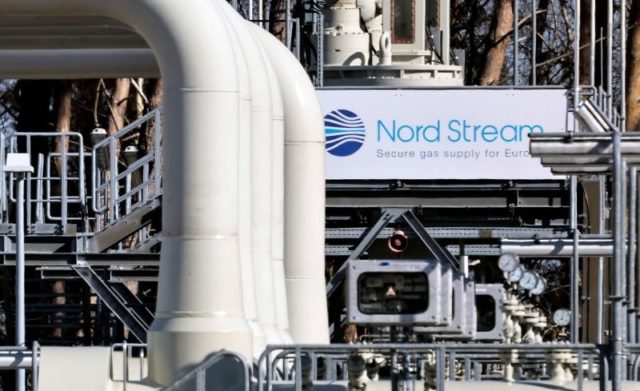
Rhetoric Versus Reality: The European Union and Imports of Russian Natural Gas
Publication: Eurasia Daily Monitor Volume: 19 Issue: 42
By:

On March 8, the European Commission announced plans to cut European Union imports of Russian natural gas by two-thirds by the end of 2022 (EurActiv—Polish service, March 9). Last year, Russia supplied EU consumers with 155 billion cubic meters (bcm) of gas. Moreover, the EU said it is working on a proposal to introduce a binding ban on all Russian energy resources supplies by 2027 (Twitter.com/vonderleyen, March 11). The strong rhetoric signals that, in the face of a Russian war of aggression against Ukraine, EU countries are fully committed to phasing out energy cooperation with Vladimir Putin’s Russia. However, this is only partially true. Indeed, at present, Russian gas flows to the European Union are rising, not declining, and only a few countries of the bloc would be ready to immediately cut their energy ties to Europe’s massive eastern neighbor.
As of mid-March, Gazprom’s supplies to Europe, even following the start of the war in Ukraine, have been rising steadily on a weekly basis, growing by around 15 percent (Bruegel.com, March 15). The trend comes as no surprise, as the European Union countries did not manage to nail down any sanctions that could directly impact the continuity of Russian energy resource supplies to the continent. Even though some frontline EU countries advocate for cutting ties with Russian suppliers (Poland, Slovakia, Lithuania—EurActiv, March 10; Biznes Alert, March 7), there are also adamant opponents to the proposal within the bloc (e.g., Germany, Hungary, Netherlands— Deutsche Welle, March 7; Kyiv Independent, March 22; Dutchnews.nl, March 8). And since EU sanctions require unanimity to be adopted, this intra-European policy divergence effectively derails any further work on energy import restrictions.
On the one hand, the current situation derives from the fact that each European country must consider its own specific circumstances—both in terms of dependency on Russian supplies/level of diversification as well as national socio-political perceptions of the level of Russian threat to them. A particularly stark example of these differences can be observed in the varying approaches of two direct EU neighbors Poland and Germany. While the Poles have worked for years to advance their security of oil and natural gas supplies (see EDM, March 7), the Germans have traditionally and increasingly relied on Russia in this regard and they presently have no instant alternative to the imports of gas, crude oil or coal from the East. The German government intends to cut its dependency on Gazprom by accelerating solar and wind farm development as well as by supporting the realization of two or three new liquefied natural gas (LNG) import terminals as soon as possible (Spiegel, March 9; Offshore Energy, February 28). Both of the above-mentioned activities will, however, need several years to bring results.
On the other hand, phasing out Russian natural gas supplies to the EU will be especially hard due to the current market situation. European storage levels are extremely low (as of March 18, storages were only a quarter filled on average—Agsi.gie.eu, accessed March 18). And spot prices for gas, both in Europe and Asia, are unprecedentedly high. The European Commission as well as individual EU governments (e.g., Germany, Latvia) are now working on regulations that will create an obligation on national gas networks to have their inventories rebuilt by the next heating season, starting on October 1 (Ec.europa.eu, March 8). Even if this solution is undoubtedly right, it will nonetheless effectively result in tougher competition between European companies (and EU member states themselves) as they struggle to secure additional LNG cargos, including to replace volumes they would have normally sought from Russia. Realistically, this looming situation may be a leading reason for why some EU countries are trying to import as much Russian gas as possible this season. A good example of this phenomenon is Austria: As of March 18, the gas storage level there slid down to 13.11 percent, and the country traditionally imports as much as 80 percent of its natural gas from Russia.
To try to ameliorate such procurement bottlenecks and ease Europe’s transition away from Russian supplies, the EU and the United States struck an agreement on March 25 to increase US LNG shipments to Europe by 15 billion cubic meters before the end of this year. This will mean 37 bcm of US LNG in total. Additional increases, up to 50 bcm per annum, are expected in the years after that. Yet to make this option feasible, Europe will need to build new and expand its existing LNG terminals and pipelines at a faster pace than is currently planned (The Guardian, March 25).
Summing up, the European Union’s withdrawal from Russian gas supplies will not happen overnight, but it is theoretically possible in a few years. That said, even if a common policy is being forged now in Brussels, the process of actually replacing Russian gas will differ in each member state and will be subject to numerous specific or common constraints. These will include, for example, factors related to supply chains (also regarding renewable energy projects that are meant to reduce gas consumption), the availability of floating storage-regasification units (FSRU) on the market, and political stability both in Europe and in the countries that could provide the EU with additional non-Russian gas (e.g., those in Africa, the Middle East, the South Caucasus or Central Asia). The ultimate outcome is, therefore, yet to be seen.



